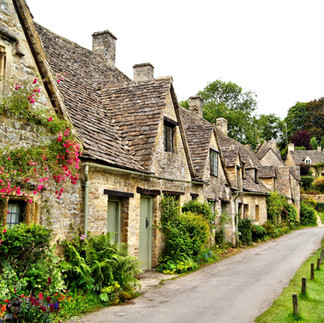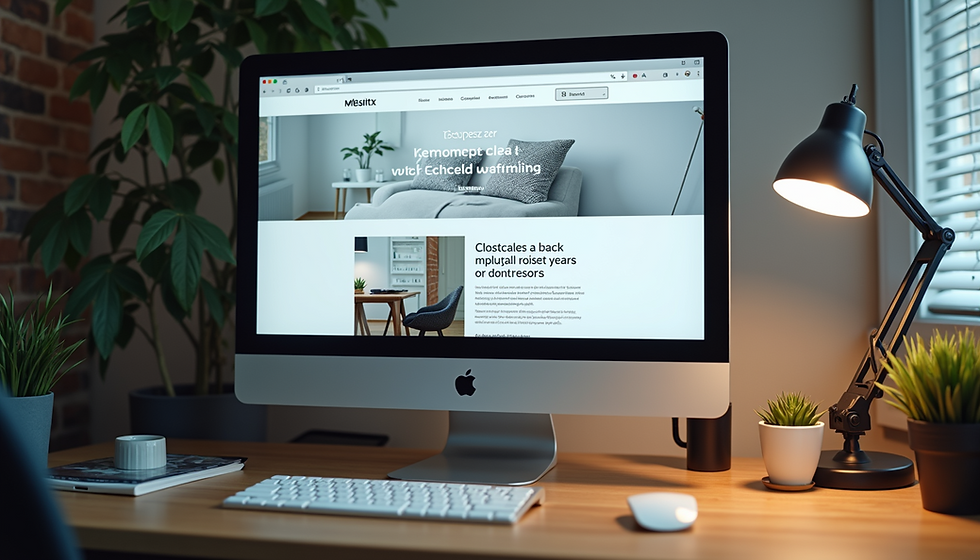Is AI damaging the creative industry?
- Jamie Price

- Mar 30
- 8 min read
Updated: Oct 19

In recent years there has been a boom in the use of AI for different purposes across different industries. From hospitals using AI to make the accuracy of surgical equipment and procedures more precise, farmers using AI to help them make better choices around irrigation, fertilisation and pest control and finally which is the area we are going to focus on, the creative industry and the use of Generative AI (GenAI).
AI is both brilliant in the way it can support and improve certain industries but also something to be wary of and should be something that each and every person needs to understand so they can be better informed around how Generative AI is used but also have the ability to identify what has, and what hasn't been created by humans.
How does JNPcreative use AI?
Given we're a creative agency and want to be transparent with our clients, generative AI is something that we have access to and occasionally use to help us speed up the work process. This reduction in time means you get a cheaper quote for your project and we therefore can have faster turnaround times.
This is where we think AI is a brilliant tool, we think the emphasis on the word 'tool' is important as this is what AI should be, it shouldn't be something that is the only thing used to produce a creative asset.
Ultimately the way we work with AI is that, we put in the hard work thinking about and developing creative ideas from scratch and we use AI on regulated, and controlled platforms like Adobe's Firefly and Adobe Express to support with things such as image resizing, background duplication/cloning, video subtitling and audio clean up, all the things that take time but are all things that get done nearing the very end of the creative process. Given our experience too we know how to do everything manually as well so, when AI lets us down sometimes we know we've got the skills to make any necessary changes.
Here is an example of how we use generative AI to expand an image to make the background wider. The original image was captured by us but we wanted a little more sky visible to the left hand side (prior to AI we would have used a cloning stamp tool which would allow us to digitally brush in the sky). In the second image you can see the end result once the generative AI tool has done its thing and made the image wider.

Other brilliant uses of AI in the creative industry
In 2024 we had the pleasure to attend Advertising Week Europe 2024 where AI was one of the hot topics of the day. Amongst this there some brilliant talks around behavioural science from the legendary Rory Sutherland and the use of out of home (OOH) digital advertising to reach larger audiences. But, our highlight session was led by London based agency eight&four and mobile gaming legends King who make the well known games Candy Crush Saga and Bubble Witch Saga where they spoke on how they use AI with their in house creative teams.
The main take away from this session was that designers can work in harmony with the Generative AI tools. At King the programme they use which Eight&Four have developed allow a creative to input their own work into a system that they regulate and it then learns off of that particular image or an image set. The example we were shown was with a Candy Crush cartoon character. The team at King had used multiple images that they fed into the AI tool allowing it to generate a much more accurate rendering as if an artist would have drawn it themselves. The great thing working with an AI tool like this is that humans get to set the standards and rules at the beginning of the creative process. It generates imagery from artwork that artists have consented to upload. Humans have complete control as it's not something that is available to the masses. It really is one of the best ways we've seen AI being integrated with other creatives.
Unethical use of AI and the harms it can cause
We've seen how AI can be used correctly, but what happens when it's used in the wrong way and by the masses?
As we mentioned above there is a repository/system that imagery or wording is fed into, the AI model then learns or trains itself on everything it can see to understand what exactly it is it's looking at using key words associated to each image. A person would then input wording or a phrase, similar to us creatives getting a brief from a client. We're going to give you an example with this prompt that we used to create this article's main cover image 'create an image of a fantasy sea creature that looks like an eel with elephant like tusks swimming amongst a vibrant bioluminescent coral reef' into an AI prompt input field on an generative AI site such as Mid Journey or X's GROK. You then click generate which takes about 20 seconds.
AI will then look at all the key words and descriptors in your prompt and look at millions of images with things it thinks are similar to it to combine into something new. It is very, very clever and getting even more accurate with what it generates.
But....
Who looks after and regulates the repository of images and words that AI references?
This is where some AI tools are very unethical and in ways fraudulent in the way they scrape (reference) assets in the public domain, which may very well include imagery like profile pictures, pictures of your pets or artwork you may have done at school or as a professional.
All this is readily available for AI to scrape, and at the moment there is very little you can do to prevent it especially for work that has been in the public domain for years before the boom of generative AI. It also means artists have no right to claim compensation for the use of their work to create something. Some artists have even had their style replicated by AI like Karla Ortiz who is currently battling AI giants in court in the US.
Simply, the act of using something that isn't your own would normally be viewed as plagiarism, a breach of privacy, forgery or copyright infringement some of which are illegal.
But, in our opinion, due to the drive to move pretty much everything to AI at pace across a majority of industries (which isn't a bad thing in most cases) there is a definite dismissal and lack of protection for artists, creatives and copywriters all over the world . Given it's those people who have created content, artwork, photographs etc, if they didn't exist Generative AI would not be possible as it would have nothing to reference.
Now that these AI tools are available on mass for everyone and anyone to use, artists and copywriters work will continue to be scraped which massively harms them and the creative industry as a whole. The output is generally sub par and even a direct copy of actual human created work.
How can you protect your own work?
As mentioned above there isn't much that can be done at the moment to protect your own work however there are some things you can use to help. Firstly if you want to know if your work has been referenced to train AI you can use Have I Been Trained to not only see if your work has been used but to also flag your artwork as something that you don't want AI to reference. We've found multiple pieces of our work on this site and is a must know for artists wanting to fight back.
So what's next for Generative AI and the creative world?
We believe that there is definitely a place for AI to be used to speed up work and design processes as well as helping generate content that is consistent with a brand's tone of voice or visual style.
What does need to change is how creatives are treated as a collective. The power needs to be given back to the people who have made this all possible despite not providing their consent and there needs to be more clarity from governments on how people's work and livelihoods can be protected and ways they can be compensated.
Currently, until there is more understanding and appreciation of how AI wrongly uses people's artworks and copy the destruction of the creative world will continue to happen, miss-information will continue to spread and even you won't be able to determine what is right or wrong any more which is a massive concern.
So by all means explore what generative AI can do so that you understand what it can do but also remember what you see, while it may look (in some cases) realistic just remember to think 'is what i'm looking at actually real?' that way having more awareness of the topic will hopefully help you make informed decisions and help expand your knowledge on the topic.
We love to find out what our audience think about our blog posts so please leave a comment below if you enjoyed this content or leave us your opinion on what are your thoughts are on AI. Do you think it's going to impact the creative industry?
Do you think you've been scammed by someone using Ai to generate a design or piece of artowork that you've commissioned?
There are a lot of people who are taking advantage of customers by claiming that the work they have created, has been produced by hand. Independent businesses and people such as self publishers are falling victim to this sort of scam regulalry, leaving them out of pocket with a bitterness toward creatives. If you feel like any piece of creative work that you've commissioned looks a bit "off", then we offer a AI identification service where we can give you advice and guidance of what your next steps are as well as a breakdown of how we can identify tell tale signs of AI use, and what your next steps are. Get in touch with us if you'd like us to support you with AI identification.
Can you spot where AI has been used?
We've placed two imposter images in the collection below. Have a look and see if you can spot the ones that have been generated using AI. Leave a comment below to let us know if you were correct. (Answers revealed at the end of this post).
So how do you think you got on?
If you found it a little hard to find the imposters amongst the image collection above then you aren't alone. From a recent survey by Microsoft's AI for good lab revealed that a little over 62% of participants would have been able to spot the AI Generated images. You can have a go at their AI identification test Real or Not here.
Now, time to reveal the results of our Generated AI imagery test:
REAL image of a wavy beach with a sandy beach
FAKE image of a maldivian getaway
REAL image of a woman looking at a scenic countryside view at sunset
FAKE image of a Burnese mountain dog
REAL image of a quaint costswold village in england
REAL image of a golden retriever puppy looking up















Comments